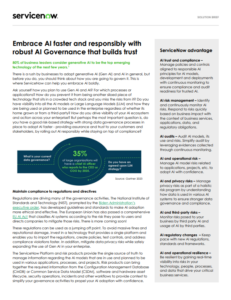Marc Postman, a prominent astronomer at the Space Telescope Science Institute and a long-time proponent of massive exoplanet-imaging observatories, holds a fairly longer but no less gleeful view.”People inquire from me why I’ve hung out on this, due to the fact, whilst [LuvEx] launches, I will simply be retired but hopefully nevertheless in my mortal shell. I tell them I’m doing this for the future although I never use it or see it get off the ground. And based totally in this Astro2020 file, the future is very vibrant. This is a generational initiative this is beyond any man or woman. Humanity is about to without a doubt embark on a quest to research whether we’re alone within the universe.”
Besides the big-ticket object of a lifestyles-searching telescope as the first of a line of flagship Great Observatories, Astro2020’s area-primarily based hints additionally call for brand spanking new as soon as-in line with-decade “probe-magnificence” missions with $1.Five billion value caps, in addition to sizeable spending to beautify astronomers’ talents to take a look at split-second celestial phenomena in actual time the use of not handiest light but subatomic debris and gravitational waves as well.
Astro2020’s purview also extends to U.S. Ground-based totally projects, that are usually funded and managed through the National Science Foundation (NSF) or now and again by the Department of Energy. In this class, the report gives pinnacle rating to a software to invest a few $1.6 billion of NSF investment within the Giant Magellan Telescope (GMT) and the Thirty Meter Telescope (TMT), gargantuan observatories in early phases of construction with an estimated overall price tag in extra of $5 billion. With the GMT inside the Southern Hemisphere—on a Chilean mountaintop—and the TMT inside the Northern Hemisphere—either at the summit of Hawaii’s Mauna Kea or a peak on La Palma in Spain’s Canary Islands—U.S. Astronomers might benefit profound new views of the complete sky through those extraordinarily powerful telescopic eyes.
Other than helping these twin titans throughout the end line, the record also recommends that the NSF and DOE jointly spend $660 million to create the Cosmic Microwave Background Stage 4 Observatory (CMB-S4), a facility to survey the massive bang’s afterglow in splendid detail. An extra $2.5 billion of NSF finances would go to constructing the Next-Generation Very Large Array (ngVLA), a radio observatory that could be 10 times more touchy than the growing old centers it might replace. Additionally, Astro2020 strongly endorses in addition enhancements to 2 projects opening totally novel windows at the cosmos: the Laser Interferometer Gravitational-Wave Observatory (LIGO) and to the IceCube Neutrino Observatory, a facility with hundreds of detectors arranged within a cubic kilometer of Antarctic ice. Paired with conventional observatories, LIGO and IceCube can help astronomers divine the arcane mechanics at play in the cores of exploding suns and between merging black holes and neutron stars.
POWER TO THE PEOPLE
The pathway forward may be clean, however ample obstacles continue to be. Much relies upon on whether Congress and the White House completely embrace—and fund—Astro2020’s pointers, a on no account positive prospect inside the current generation of hyperpolarized politics. Then there is the looming trouble of satellite tv for pc mega constellations. Despite their advantages for worldwide broadband connectivity, these corporations of satellites pose existential threats to more than one major tasks via the optical and radio contamination they inescapably upload to exquisitely delicate observations of the heavens.
For that increasingly more dire hassle, Astro2020 gives simplest the instead dissatisfying solution of accomplishing interagency, in addition to global, collaboration to plan higher, greater protective regulatory frameworks. But because the authors of the report themselves be aware, notwithstanding such demanding situations, the fulfillment of their audacious imaginative and prescient may also in the end hinge on how they deal with the maximum treasured belongings of U.S. Astronomy, which aren’t greenbacks but people. “Our file says severe interest additionally desires to be paid to investments in the foundations of this studies—along with in the folks that deliver it out,”
That popularity, deep inside the Decadal Survey’s bones, is one reason Astro2020 is “a big win for U.S. Astronomy,” says Scott Gaudi, an astronomer on the Ohio State University and co-chair of the HabEx mission concept examine. And that’s exactly what we want to make the greater ambitious components of this imaginative and prescient even potential within the first area.” In latest years, the network has been left reeling not best from price range-blowing projects but also from sexual-harassment scandals, anemic help for early-career researchers and their smaller-scale tasks, and brutal asymmetries in work-life stability which have caused burnout and bad nicely-being. There is also a worrisome lack of diversity a number of the ranks. In this melting-pot state, the typical practitioners of astrophysics continue to be overwhelmingly white and male, with all of the privileges, apparent or diffused, this involves—something keenly felt whilst, as an instance, a number of them seek to construct new facilities at the sacred grounds of historically disenfranchised minority companies, as is the case of the TMT and the task’s desired creation site on Mauna Kea.
To remedy those and other social ills, Astro2020 recommends more spending on research offers and impartial postdoctoral fellowships, multiplied funding and institutional assist for range-boosting projects at the university and federal-organization level, and a proper popularity at NASA, the NSF and the DOE that harassment and discrimination are corrosive kinds of medical misconduct. With the TMT imbroglio at Mauna Kea definitely in mind, the file also requires a “Community Astronomy” model of engagement that might are seeking for to “recognize, empower, and gain local communities at the same time as advancing medical research,” in keeping with a National Academies press release.
“Sometimes scientists have to take delivery of a tough ‘no’ from Indigenous human beings,” Prescod-Weinstein says. “Instead [Astro2020] focuses extra on what the characteristics and excellent of a collaboration among Indigenous communities and scientists ought to be. It never without delay acknowledges the state of affairs that Indigenous people may not need to collaborate…. My view may additionally trade as soon as I’ve had extra time to take a seat with the file, but my first affect is that clinical goals are nevertheless superb and that we are nevertheless no longer prepared, as a network, to speak to nonastronomer Indigenous people as though they are our equals and their worries be counted as a whole lot as ours.”







